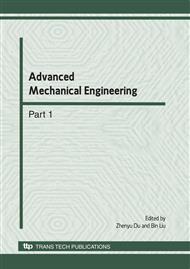p.794
p.800
p.805
p.809
p.813
p.817
p.821
p.826
p.830
An Optimization Algorithm for a Class of Mathematical Model in Mechanical Engineering
Abstract:
In this paper, we develop an algorithm to globally solve a class of mathematical models in system engineering. Firstly, by utilizing equivalent problem and linear relaxation method, a linear relaxation programming of original problem is established. Secondly, by using branch and bound technique, a determined branch and bound algorithm is proposed for globally solving original problem. Finally, the convergence of the proposed algorithm is given and numerical examples showed that the presented algorithm is feasible.
Info:
Periodical:
Pages:
813-816
Citation:
Online since:
June 2010
Authors:
Price:
Сopyright:
© 2010 Trans Tech Publications Ltd. All Rights Reserved
Share:
Citation:


